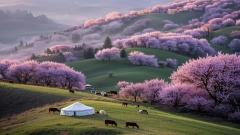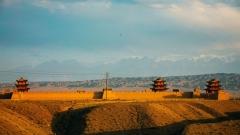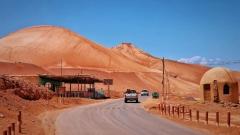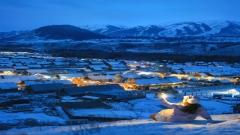The Taklamakan Desert, often called the “Sea of Death,” is the largest desert in China and the second-largest shifting sand desert in the world. Stretching across the heart of Xinjiang, this vast sea of golden dunes holds both mystery and beauty. For travelers seeking adventure, the Taklamakan offers not only dramatic desert landscapes but also the surprising charm of life-sustaining oases.
The Allure of the Taklamakan Desert
Covering more than 330,000 square kilometers, the Taklamakan Desert is legendary for its size and harshness. Yet its endless waves of dunes—some rising as high as 300 meters—make it one of the most stunning desert landscapes in Asia. The name “Taklamakan” is often translated as “You can get in, but never get out,” a reflection of its intimidating reputation along the Silk Road.
Today, modern travelers can explore this once-forbidding land through guided tours and desert highways that cross from north to south and east to west. Instead of danger, you’ll find awe-inspiring scenery, quiet starlit nights, and fascinating encounters with history and culture.
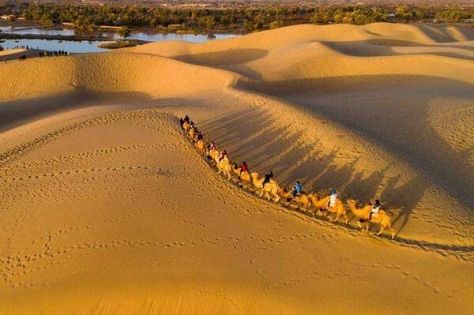
Taklamakan Desert
Sand Dune Adventures
One of the highlights of a Taklamakan trip is experiencing the massive dunes. Adventurous travelers can:
-
Ride camels across golden ridges, just like ancient Silk Road merchants.
-
Try sandboarding, sliding down the dunes for a thrilling desert sport.
-
Watch the sunset over the vast sea of sand, as shifting colors paint the horizon from gold to crimson.
-
Camp under the stars, where the Milky Way shines brighter than in almost any other place on Earth.
The silence of the desert is profound—making every footstep on the sand a reminder of its timeless stillness.

Life in the Oases
Although the Taklamakan is a barren desert, its edges and pockets are dotted with oases that have supported human life for centuries. These green havens were once crucial stops along the Silk Road, offering water, food, and shelter to weary caravans.
Some must-visit oases include:
-
Hotan (Hetian): Famous for jade, silk, and vibrant bazaars.
-
Yarkand (Shache): Known for its ancient mosques and Uyghur traditions.
-
Kuqa: A cultural hub with Buddhist caves and historical ruins.
These oases remain cultural treasures, where Uyghur heritage, crafts, and cuisine continue to thrive amidst the desert’s harsh surroundings.

Best Time to Visit
The Taklamakan Desert can be extreme, with scorching summers and freezing winters. The best seasons to visit are spring (April–June) and autumn (September–October), when the weather is mild and the desert is most welcoming.
Travel Tips for the Taklamakan Desert
-
Bring plenty of water, sunscreen, and protective clothing.
-
A guided tour is highly recommended for safe exploration.
-
Prepare for temperature swings—warm days and cold nights.
-
Respect local culture when visiting oasis towns and bazaars.
Conclusion
A journey into the Taklamakan Desert is not just about vast sand dunes—it’s about retracing the footsteps of Silk Road traders, experiencing Uyghur culture, and finding life in places where survival seems impossible. Whether you’re drawn by the thrill of desert adventure or the serenity of starry nights, the Taklamakan promises an unforgettable travel experience.





